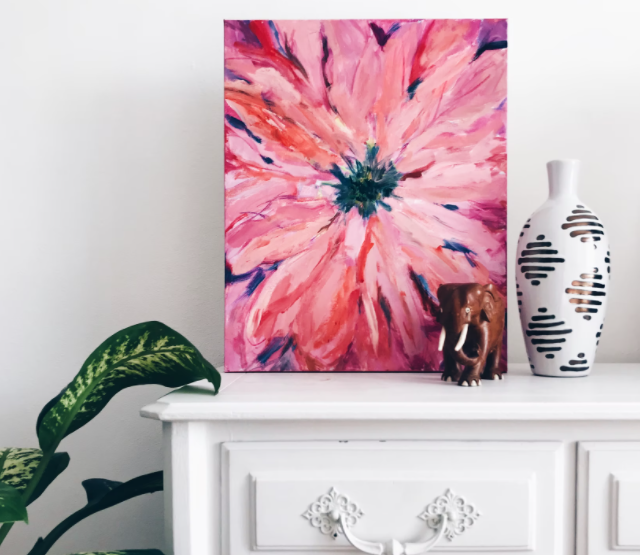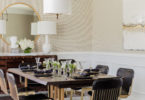Figuring out the wall art arrangement is one of the problems you often face in interior designing. Unfortunately, when you hang wall art improperly, it sticks out similar to a sore thumb. But getting the right wall art arrangement can be daunting. The way you display wall art is critical when you talk about home decor. You must know some of the unspoken tricks that you must follow. It is a wonderful way to add interest and style to the interiors.
Follow the tips below to arrange the art pieces like a professional and dress walls of a room for an impressive look:
Match Artwork to Interiors
There are many types of artwork including, trending abstract art, photo collage, metal prints, etc. So, choose pieces for the walls that match with other colors of space. Your art piece can introduce an extra accent shade, but it should complement the overall scheme.
Your living room is much more than the transit space. It gives the first impression and is a way to determine how other rooms will look. So, decorating it with art pieces is the perfect business card.
Design a Gallery Wall
Do not worry if you don’t have a big piece to fill blank space and create a focal point. You can showcase smaller pieces you have by designing a gallery wall. You can arrange artworks in grid form or showcase asymmetrical designs. If you put all the art pieces in similar frames, it will create a uniform look. However, if you mix and match frames with different textures or colors, it will give a vibrant and unique view.
Keep Spaces Between all Frames
If you display more than one art piece, always keep enough space between frames to avoid uncluttered wall arrangement. Make sure to leave at least 1 to 2.5 inches of space in between smaller artworks. However, if the wall art size is big, keep 2 to 3 inches of space minimum to achieve a balanced or professional look.
Size Matters a Lot
In the case of wall art displays, size plays a vital role. Choosing the more miniature artwork is as bad as selecting oversized print. So you can take a picture of a wall. Check if the painting consists of light colors; its size will look smaller than the original. At the same time, art pieces made of darker shades absorb the surroundings and create a feeling of a bigger size.
Install Floating Shelves on a Wall
Floating shelves are an innovative and intelligent way to add 2-D art pieces in the empty space. These shelves do not cost much and are easy to create. You just need a plank to attach with the blank space. Then, paint that plank with the same shades as the rest space. Since shelves will blend in on the vertical space, any object like tiny sculptures or books will add a dimension to the room.
Develop a Visual Balance via Artwork
You can hang wall art at any part of a living room, but make sure not to disturb the already set theme. You can usually see art pieces behind the seat or above a fireplace in the common area. You can be a bit creative too. So, while hanging portrait art, take a paper to draw arrows on it. They allow you to indicate the way your subject is observing.
Put Composition
When paintings on a wall have similar sizes, frames, or finishes, they will create a neat result. Its view and outcome are prettier than art pieces with different features. To achieve an asymmetrical composition, always set equal spaces between the art pieces.
The Lean
It is a myth that you can only hang artwork on the walls. But in actuality, you can show off single or multiple art pieces on a long and shallow shelf. To achieve a more casual look, always lean wall art on shelves. Choose different sizes or orientations to have a layered look. If there is extra space, add a small vase or an antique object in front of the artwork to create a visual appeal. Make sure to swap out the art pieces often. This style will look great then.
A Focal Point
A gallery wall makes a statement in the room; similarly, an oversized artwork gives a focal point to the space. It can be a painting, print, photograph, mirror, or other décor elements for an accent wall. It suits well, especially with anchoring large furniture items like bed, sofa, desk, etc.
Bonus Tips
While creating a wall art display, test your arrangement before hanging the art pieces. Because sometimes, you are not sure whether you prefer an asymmetrical or grid pattern. So, pick adhesive tape and mock-up the wall display arrangement.
Once you are satisfied with the view, use a hammer or nails to hang art pieces. Always remember to use low-quality adhesive tape to prevent paint from peeling.




